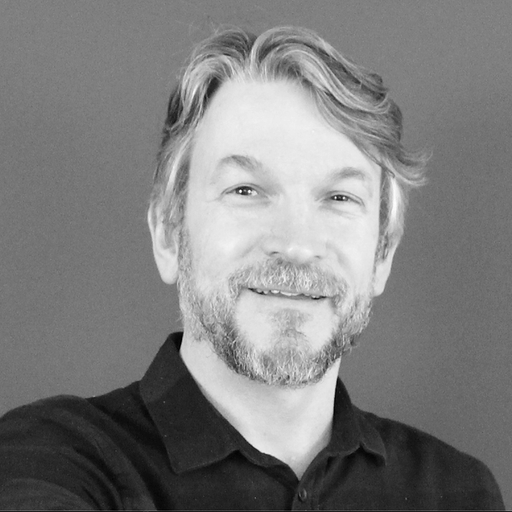The double diamond is a powerful tool for design teams that both gives shape to our projects and helps us communicate with stakeholder and clients.
It’s a model of the design process which, obviously, has two diamonds, side by side.
It represents design thinking and illustrates neatly in a single image how design projects typically oscillate between periods of broad exploration and precise refinement. They diverge and converge.
We start with a problem to solve as expressed by the client or stakeholder. We explore and research around it, piling up thoughts and information. Then we narrow back down to a clear statement of the problem.
That’s diamond number 1.
Then we start having lots of ideas and building low-fidelity prototypes which we can test and share for feedback. Finally, we pick one solution and build it ‘for real’ so it can be tested more, or released into the wild as a ‘minimum viable product’ (MVP).
And there’s diamond number 2.
Pretty simple, right? That’s probably why it’s been taken up so widely across the industry and how it’s made it to its 20th birthday this year, still going strong.
As the Design Council celebrates that landmark, we want to take a moment to reflect on the benefits of the double diamond, its potential downsides, and its place in the design process in 2023.
Where did the double diamond come from?
The history of the double diamond starts with an attempt by Richard Eisermann, then director of design at the Design Council, to describe the design process:
“Richard believed Design Council needed a consistent way of telling a process story… The ambition was to create something that would be applicable in any field; to create a model that Design Council could use with anyone they worked with… Over the course of several sessions, the group came up with a simplified way to describe any design and innovation process. It is based on four distinct phases that the team, deliberately seeking a memorable device, named Discover, Define, Develop and Deliver…”
The funny thing is design teams are so used to talking in these terms that it’s all too easy to forget they haven’t been with us forever.
The double diamond rolled out during 2004 and rapidly became a standard part of the toolkit for designers around the world.
Because the Design Council cannily released it under a Creative Commons licence, other organisations were able to release their own tweaks and takes.
And large, influential organisations such as the UK Home Office and Meta (Facebook) adopted it, too.
When SPARCK was founded in 2016, as the design and innovation consultancy for BJSS, there was never any doubt that the double diamond would and human-centred design would be the bedrocks of our approach.
How the double diamond helps designers
Let’s be honest, one of the biggest challenges design teams face is that people don’t always understand what we do, or why we’re there.
The double diamond helps us through that blockage. It’s a way of saying that, when we seem to disappear into a whirlwind of workshops and research, don’t worry – progress is being made! There will be outputs, and milestones – even if they might be difficult to turn into JIRA tickets.
It’s also useful for encouraging (I won’t say ‘enforcing’…) design thinking in organisations or teams that don’t naturally work that way.
“I think it can be particularly effective in making people aware when they're conducting solution-focused research,” says SPARCK consultant Jimmy Adams. “That’s ‘to-be’ thinking and not true problem-focused research, or ‘as-is’ thinking.”
Jimmy used the double diamond last year to help the client understand the flow and structure of a 16-week discovery project.
“It emphasised how critical strategic alignment is at the midpoint, between the two diamonds, to anchor the solution-based thinking,” he says. “It gave them confidence that opportunities would be realised, if they let the process run its course.”
Is the double diamond still useful in 2023?
As tends to happen when a concept has been around for a while, people have begun to question the double diamond in recent years. Could there be a better way?
“It’s completely separating the analysis/discovery and the definition of the problem from the ideation and the delivery of the solution(s)” wrote Maciej Lipiec in 2019. “It’s very linear and this is not how great designers really work.”
My colleague Harriet de Wet, a service design consultant, echoes this thought: “I use the double diamond primarily to illustrate to non-designers what the design process ought to look like. But I’m fully aware that it's not always how we operate in practice, when we’re balancing the needs of users, clients and stakeholders.”
I’d agree with the point that it is effective in communicating the process of design to clients and prospective clients. It makes it feel simple and represents the exploratory nature of the design process.
In practice, though, it needs to be used in conjunction with other models of service design. We need to design for viability and feasibility as much as for desirability.
The Design Council’s own expanded double diamond goes a long way to fixing some of the problems, or over-simplifications. It speaks to inclusive and responsible design, along with the importance of storytelling.
I wonder if, in its next decade, the double diamond could benefit from tweaks that reflect the circular nature of design. Sometimes, we need to loop a few times to land in the right place.
And, of course, it needs to adapt to build concerns around sustainability into the design process.
Could the double diamond work for you?
If you want to talk about how design thinking and the double diamond could help your organisation solve its biggest problems, give me a shout.
I’m on LinkedIn or you can email me via this website.
In the meantime, let’s raise a glass and say happy birthday to the double diamond – we literally couldn’t have done it without you.



